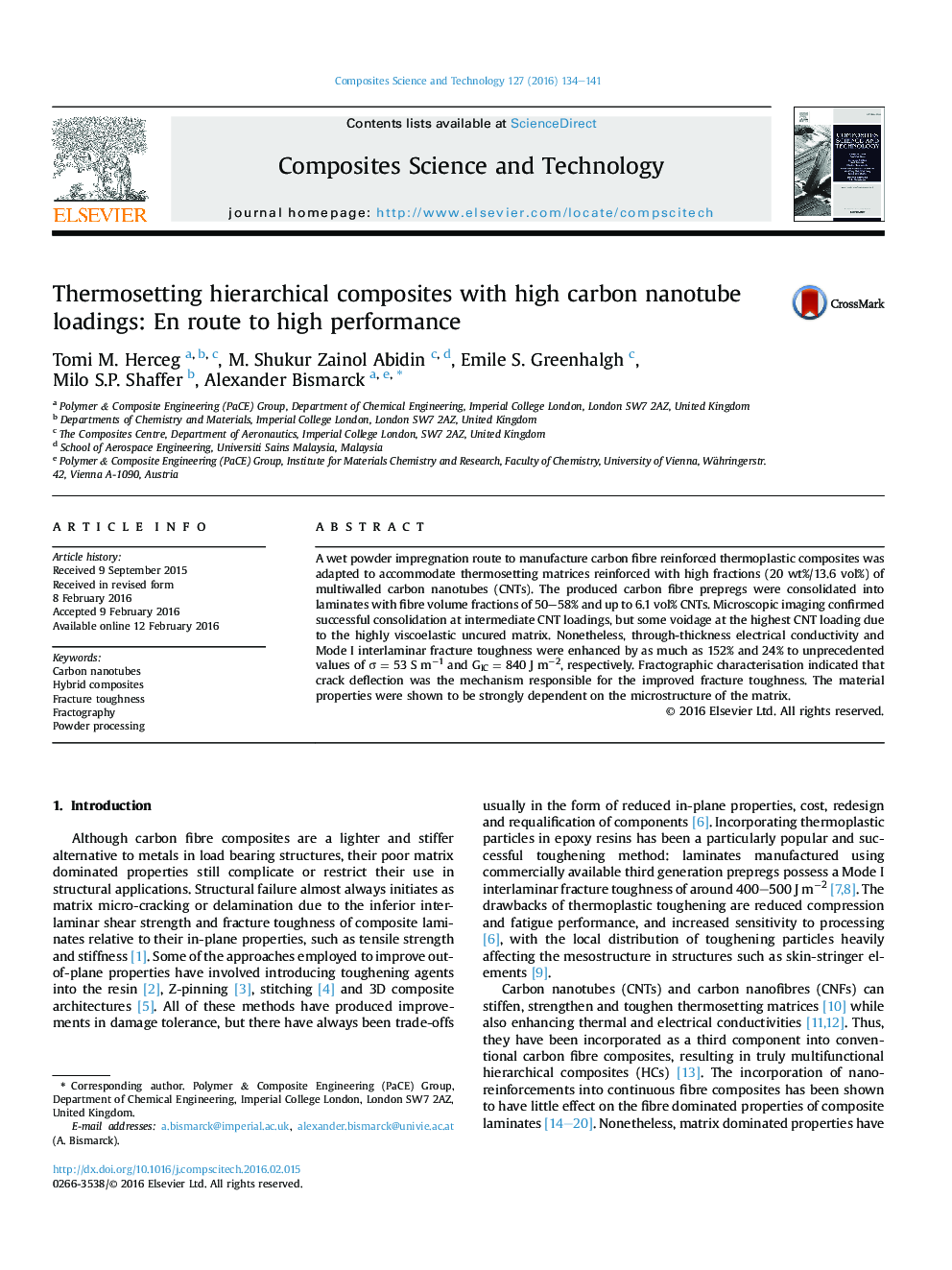| Article ID | Journal | Published Year | Pages | File Type |
|---|---|---|---|---|
| 819958 | Composites Science and Technology | 2016 | 8 Pages |
A wet powder impregnation route to manufacture carbon fibre reinforced thermoplastic composites was adapted to accommodate thermosetting matrices reinforced with high fractions (20 wt%/13.6 vol%) of multiwalled carbon nanotubes (CNTs). The produced carbon fibre prepregs were consolidated into laminates with fibre volume fractions of 50–58% and up to 6.1 vol% CNTs. Microscopic imaging confirmed successful consolidation at intermediate CNT loadings, but some voidage at the highest CNT loading due to the highly viscoelastic uncured matrix. Nonetheless, through-thickness electrical conductivity and Mode I interlaminar fracture toughness were enhanced by as much as 152% and 24% to unprecedented values of σ = 53 S m−1 and GIC = 840 J m−2, respectively. Fractographic characterisation indicated that crack deflection was the mechanism responsible for the improved fracture toughness. The material properties were shown to be strongly dependent on the microstructure of the matrix.
